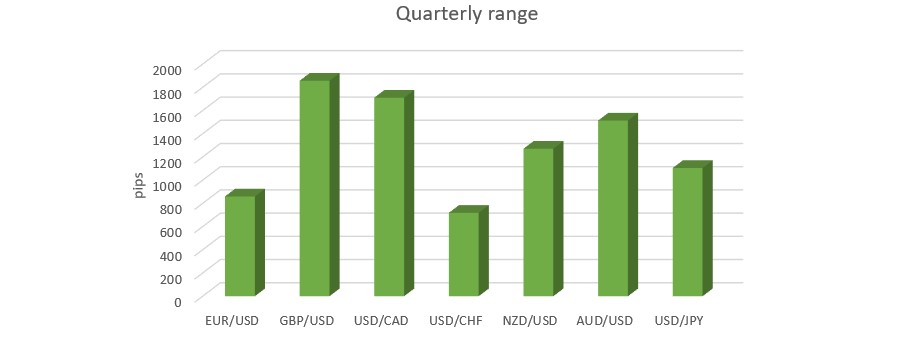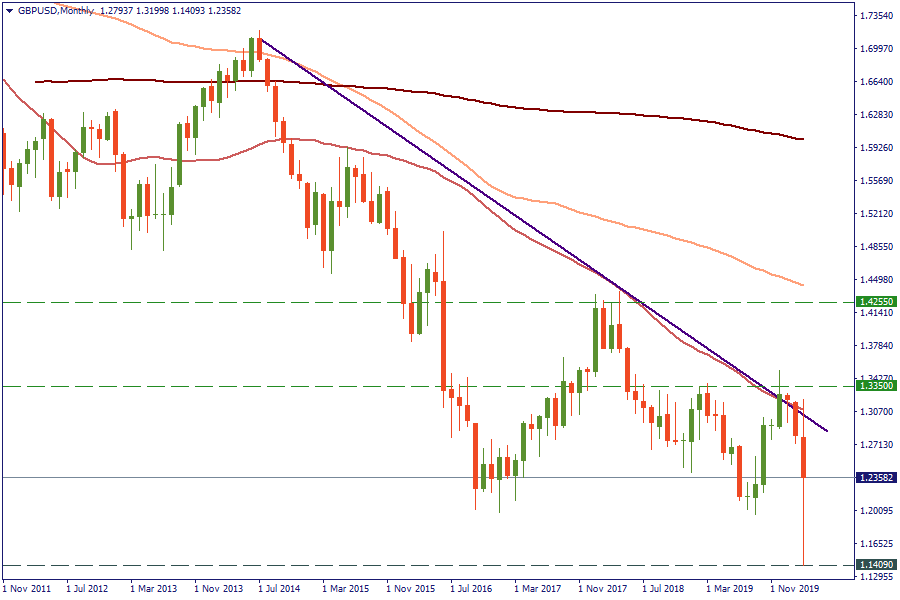The first quarter is over: the review of the market
In December 2019, when the FBS Analytical department wrote the forecasts for the upcoming year, no one could predict what would happen in just a month. Covid-19 appeared out of sudden and took the main stage from the endless US-China trade dispute, Brexit worries, and other "less important" stuff. That’s the nature of a black swan – you never know about it until it appears and affects your profit, future, and possibly even your mental health. As today is the last day of the first quarter, let’s look at the performance of the major currency pairs and analyze what may come next for them.
Which pair was the most volatile this quarter?
At the beginning of the quarter, when the virus only started its deadly journey in China, the spikes of the risk-off sentiment resulted in the weakness of commodity-linked and other risky currencies. The US dollar, alongside with the Japanese yen, took the lead. However, the situation changed last week, after the US government approved the $3 billion bill to support the economy amid the coronavirus crisis.

In the picture above we can see the change between highs and lows of major currency pairs. We can notice that the most volatile performance was by GBP/USD and USD/CAD. Let's look at both of them.

While the cable continued moving within the long-term downtrend under the 50-month MA, a combination of negative factors managed to pull it to the lowest levels since 1985. Here we can mention coronavirus shock, liquidation of longs after the Parliamentary election, and the late reaction to the pandemic by the British government. As the USD continued to serve as a safe haven for many investors, the British pound dropped against it to 1.1409. Now bulls are trying to push it back to the borders of the descending trendline. On the daily chart, the pair is trading near the 1.24 level.
New quarter’s opportunities: traders need to pay attention to the moves of the USD. The US is a leader in coronavirus cases, so the USD may get weaker on the new measures by the US government and the Fed and disappointing economic data. As a result, the British pound may strengthen.

The Canadian dollar stays under pressure as the oil prices fall. Thus, USD/CAD retested the long-term resistance at 1.4689. On the monthly chart, the pair is well-supported by the 50-day MA and the 1.2960 level.
New quarter’s opportunities: Oil, oil, and oil. The most important driver of the Canadian dollar is the situation in the oil market. Even the recent rate cut by the Bank of Canada did little to the performance of the loonie. Read more about the analysis of oil prices on our website.
Who were the winners and the losers of this quarter?
In the chart below, we highlighted the quarterly performance of the major currencies. No surprises, the USD/CAD pair was a big winner, while GBP/USD – a heavy loser. It is interesting to look at the "battle of safe havens". Both USD/JPY and USD/CHF did not change a lot, as investors preferred putting capital to the American currency at first. However, the USD rally ended last week with a downside correction, providing opportunities to the Swiss franc and Japanese yen.

What to expect next?
We are entering the second quarter of this year with a lot of uncertainties. The pandemic continues, and governments try their best to fight the consequences and to smooth the negative effect of it. However, there is still a ray of hope. We are talking here about the Chinese example. Today, China reported a better-than-expected manufacturing PMI (52 vs. 44.9). Things are getting better there, and production is restored. Let's see how the situation will develop from here in Europe and the USA.